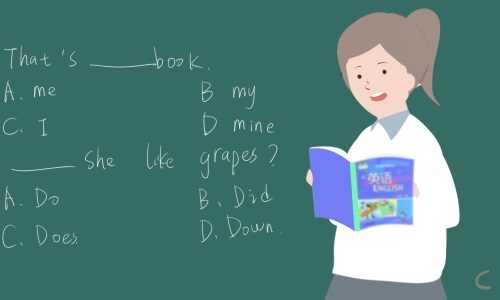英语初一上册知识点梳理
知识是静态的,人有了知识,还应该明白如何正确地将所掌握的知识在实践中加以应用,没有智慧,充其量不过是一本记载着知识的书。下面小编给大家分享英语初一上册知识点,希望能够帮助大家,欢迎阅读!

英语初一上册知识点
人称及人称代词的不同形式(主格和宾格)
1、三种人称:第一人称(I, we),第二人称(you, you),第三人称(he, she, it, Maria)。
2、人称代词的主格,即人称代词位于句子主语位置时的形态:I, We, You, You, He, She, It, Maria。
3、人称代词的宾格,即人称代词位于句子宾语位置时的形态:me, us, you, you, him, her, it。
4、形容词性物主代词:my, our, your, your, his, her, its, their。
5、名词性物主代词:mine, ours, yours, yours, his, hers, its, theirs。
6、反身代词:myself, ourselves, yourself, yourselves, himself, herself, itself, themselves。
基数词
(表示数量多少的词,大致相当于代数里的自然数) zero, one, two, three, four, five, six, seven, eight, nine, ten, eleven, twelve, thirteen, fourteen, fifteen, sixteen,seventeen, eighteen, nineteen, twenty, twenty-one, twenty-two, twenty-three,twenty-four, twenty-five, twenty-six,
twenty-seven, twenty-eight, twenty-nine, thirty, forty, fifty, sixty,seventy, eighty, ninety, one hundred,one hundred and one。
英语初一上册知识点梳理
般疑问句及特殊疑问句
1、一般疑问句:能用Yes或No来回答的问句。一般疑问句句尾读升调。
2、特殊疑问句:不能用Yes或No来回答的问句。特殊疑问句句尾读降调。
可数名词变复数时,有规则变化和不规则变化两种。
1、规则变化:
1)一般情况直接在词尾加“-s ”,如:cake-cakes, bag-bags, day-days, face-faces, orange-oranges等;
2)以s, x, sh, ch结尾的词,要在词尾加“-es ”,如:bus-buses, watch-watches, box-boxes等;
3)以辅音字母加y结尾的词,变y为i再加“-es ”,如:baby-babies, country-countries, family-families等;
4)部分以f (e)结尾的词,变f (e)为“ves ”,如:knife-knives, half-halves等;
5)以o结尾的词,加“-s ”或“-es ”,如:zoo-zoos, photo-photos, tomato-tomatoes, potato-potatoes等。记忆口诀:除了“英雄”hero外,凡是能吃的,加“-es ”,不能吃的加“-s ”。
2、不规则变化:
1)改变单数名词中的元音字母:man-men, woman-women, foot-feet, tooth-teeth等;
2)单、复同形:sheep-sheep, Chinese-Chinese, Japanese-Japanese等;
3)其他形式:mouse-mice, child-children等。
七年级上期末英语复习资料
短语句型:
1, 谢谢你的全家福Thanks for the photo of your family.
你的全家福 photo of your family = your family photo
2 谢谢你帮了我 Thanks for helping me =Thanks for your help
2 here be 句型和there be 句型一样 ,临近原则 Here is a cup of tea and two apples 。
语法: 初中英语语法基础知识,也是初中英语考试的复习重点,河南中招英语考试。
1)单数名词加s: students, apples, bags, trees, books, brothers.?
2)以s、x、sh、ch结尾的名词加es: glasses, boxes, brushes, matches.?
3)以辅音字母加y结尾的名词,变y为i加es: cities, babies, enemies.?4)以f或fe结尾的名词,多数变f为v加es: wives, knives.但有些词只加s: roofs, proof s, chiefs.?
5)以o结尾的名词,有生命的加es: Negroes, heroes, tomatoes, potatoes.无生命的加s: radio s, zoos, pianos, photos.?
6)不规则名词:foot→feet, goose→geese, tooth→teeth, child→children, man→me n, woman→women, sheep→sheep, deer→deer, mouse→mice
7)集体名词,以单数形式出现,但实为复数。例如: people police cattle 等本身就是复数,不能说 a people,a police,a cattle,但可以说a person,a policeman
七年级上册英语知识点
一、48个国际音标及26个英文字母的正确书写
要熟练掌握元音和辅音,5个元音字母(a, e, i, o, u),字母的正确占格及单词间距。
二、be动词的用法
be动词有三种变形,分别是:am, is, are。记忆口诀:
“我”用am, “你”用are, is用于“他、她、它”;单数全都用is,复数全部都用are。
三、人称及人称代词的不同形式(主格和宾格)
1、三种人称:第一人称(I, we),第二人称(you, you),第三人称(he, she, it, Maria)。
2、人称代词的主格,即人称代词位于句子主语位置时的形态:I, We, You, You, He, She, It, Maria。
3、人称代词的宾格,即人称代词位于句子宾语位置时的形态:me, us, you, you, him, her, it。
4、形容词性物主代词:my, our, your, your, his, her, its, their。
5、名词性物主代词:mine, ours, yours, yours, his, hers, its, theirs。
6、反身代词:myself, ourselves, yourself, yourselves, hims elf, herself, itself, themselves。
四、基数词(表示数量多少的词,大致相当于代数里的自然数)
zero, one, two, three, four, five, six, seven, eight, nine, ten, eleven, twelve, thirteen, fourteen, fifteen, sixteen, seventeen, eighteen, nineteen, twenty, twenty-one, twenty-two, twenty-three,twenty-four, twenty-five, twenty-six, twenty-seven, twenty-eight, twenty-nine, thirty, forty, fifty, sixty,seventy, eighty, ninety, one hundred,one hundred and one。
五、一般疑问句及特殊疑问句
1、一般疑问句:能用Yes或No来回答的问句。一般疑问句句尾读升调。
2、特殊疑问句:不能用Yes或No来回答的问句。特殊疑问句句尾读降调。
七年级英语重要知识点
◆短语归纳
1、 get to school 到达学校
2、 take the subway 乘地铁
3、 ride a bike 骑自行车
4、 how far 多远
5、 from home to school 从家到学校
6、 every day 每天
7、 take the bus 乘公共汽车
8、 by bike 骑自行车
9、 bus stop 公共汽车站
10、 think of 认为
11、 between … and … 在…和…之间
11-year-old boy 一个11岁的男孩
13、 play with … 和…玩
14、 come true 实现
15、 have to 不得不
◆用法集萃
1、 take… to …= go to … by… 乘…去…
2、 How do / does (sb)get to …?…是怎样到…的?
3、 How far is it from … to …?从…到…有多远?
4、 It takes sb. some time to do sth. 做某事花费某人多长时间。
5、 How long does it take to do sth.? …花费多长时间?
6、 It is + adj. + to do sth. 做某事是…。
7、 Thanks for + n. / Ving 感谢你(做)某事。
◆典句必背
1、 How do you get to school? I ride my bike.
2、 How far is it from your home to school?
3、 How long does it take you to get to school?
4、 For many students, it is easy to get to school.
5、 There is a very big river between their school and the village.
英语初一上册知识点
上一篇:初一上学期英语知识点
下一篇:返回列表






